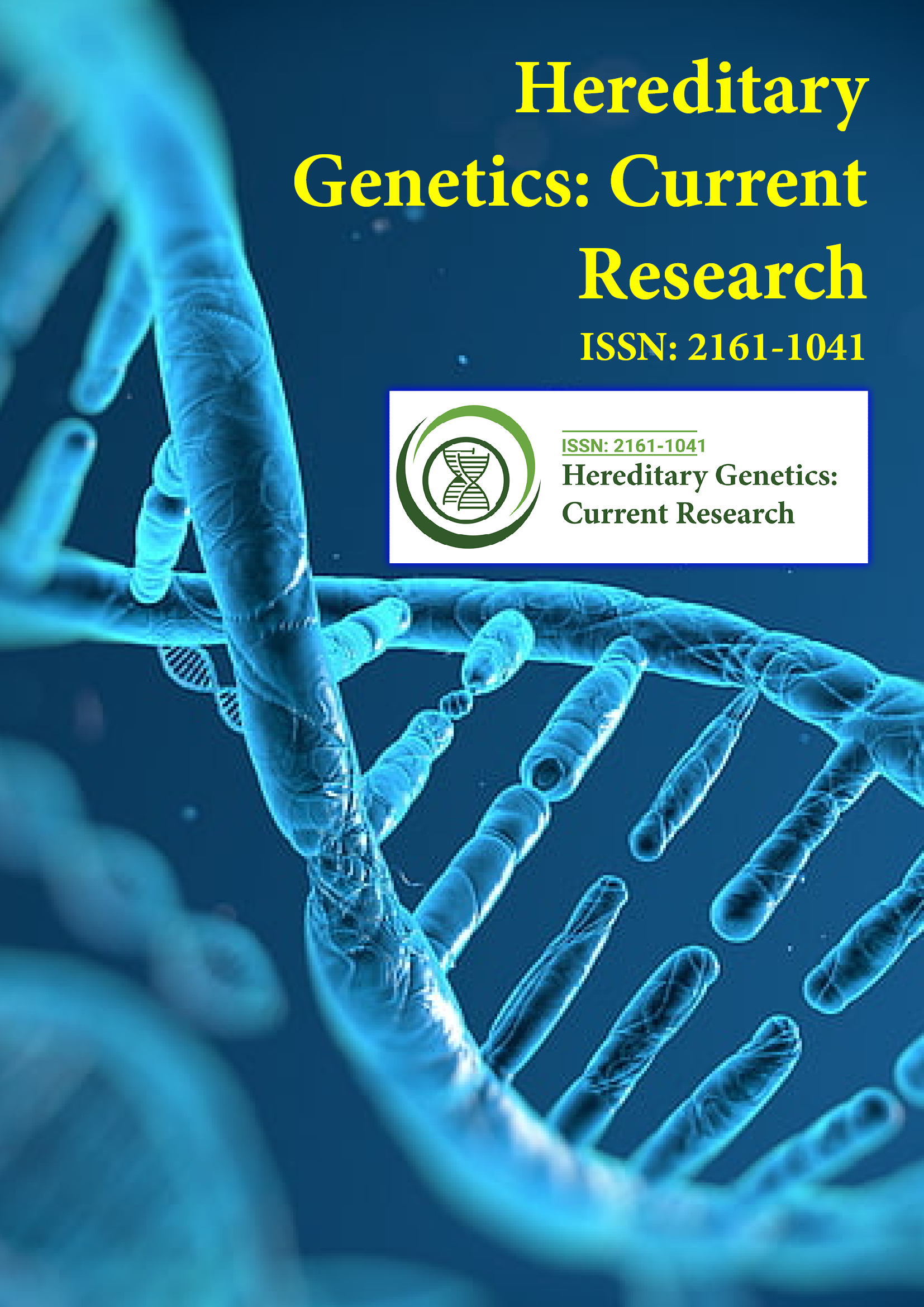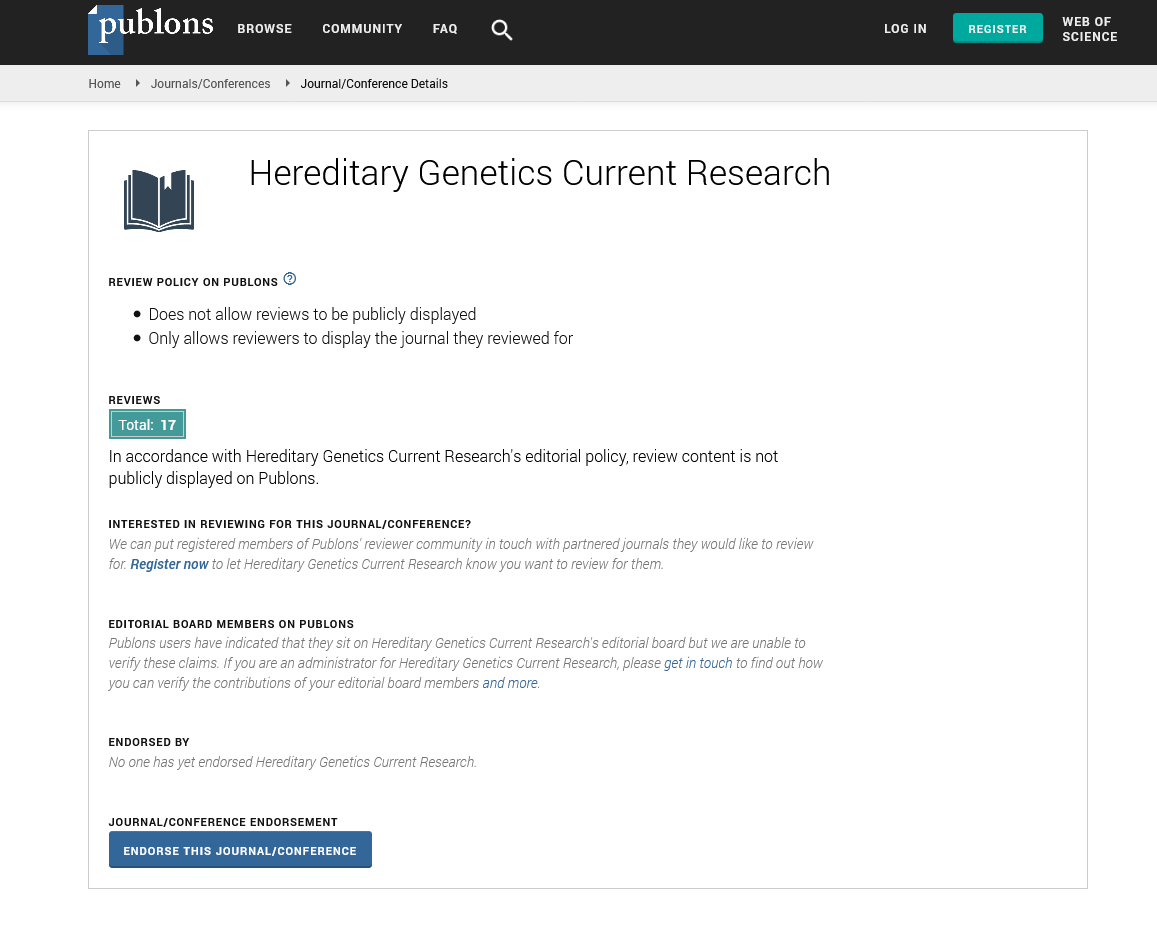Indexed In
- Open J Gate
- Genamics JournalSeek
- CiteFactor
- RefSeek
- Hamdard University
- EBSCO A-Z
- NSD - Norwegian Centre for Research Data
- OCLC- WorldCat
- Publons
- Geneva Foundation for Medical Education and Research
- Euro Pub
- Google Scholar
Useful Links
Share This Page
Journal Flyer

Open Access Journals
- Agri and Aquaculture
- Biochemistry
- Bioinformatics & Systems Biology
- Business & Management
- Chemistry
- Clinical Sciences
- Engineering
- Food & Nutrition
- General Science
- Genetics & Molecular Biology
- Immunology & Microbiology
- Medical Sciences
- Neuroscience & Psychology
- Nursing & Health Care
- Pharmaceutical Sciences
Perspective - (2022) Volume 11, Issue 2
Different Functions of Genetic Diversity in Crop Plants
Grigory Suhail*Received: 01-Mar-2022, Manuscript No. HGCR-22-16429; Editor assigned: 04-Mar-2022, Pre QC No. HGCR-22-16429(PQ); Reviewed: 18-Mar-2022, QC No. HGCR-22-16429; Revised: 25-Mar-2022, Manuscript No. HGCR-22-16429 (R); Published: 04-Apr-2022, DOI: 10.35248/2161-1041.22.11.209
Description
The function of genetic diversity crop plants evolution, whether natural or controlled by humans, is primarily based on the existing genetic diversity of the population. Diversity can be described as the degree of differentiation between or within species. Existing intra- and inter-species differences are the basis of all crop improvement programs. If all individuals in the species were similar, there may have been no room to improve the performance of plants with different traits. Since the beginning of systematic plant breeding, natural volatility and differences between crops have been widely identified and used to improve crop.
Due to the reduced genetic diversity, further improvement of plant varieties can be a difficult task. Breaking down yield barriers is difficult and producers will be unable to meet the ever increasing demand due to the explosive growth of the population. Genetic diversity is becoming increasingly important in the context of climate change and related unexpected events, as it can serve as a reservoir for many new traits that impart resistance to a variety of biological and abiotic stresses. Genetic diversity is the root cause of many important agricultural phenomena, such as heterosis and transcendental segregation. Different strains are required for error correction of commercial varieties and development of new varieties.
Therefore, identifying diverse strains, creating diversity, and subsequent utilization are the main goals of the crop improvement program. In this context, all aspects of genetic diversity, the factors that influence genetic diversity, the various methods of diversity analysis, their measurements, and the knowledge of the software that performs statistical analysis, make them cautious will be essential for use in key issues such as changes in genetic diversity in plant breeding, genetic susceptibility of modern cultivated varieties, conservation and use of genetic resources, assessment of genetic diversity with molecular markers, and measurement of genetic diversity with statistical tools many reviews have been written to cover.
The current overview attempts to provide the overall concept in the field of genetic diversity. This can be very important for gaining knowledge and meaningful research. Diversity is the essence of the biological world. No two creatures including maternal twins are exactly the same. Differences in one or several properties of an organism are called volatility. In general terms, genetic diversity is considered synonyms, which is incorrect. Genetic variation is a mutation in an allele of a gene or a mutation in a DNA/RNA sequence within a gene pool of a species or population. It expresses itself in the form of an alternative form of phenotype. In Genetic diversity, is a broad term that includes all variability that occurs between different genotypes or species in terms of the overall genetic composition of genotypes associated with a single species.
Genetic diversity can be measured by counting the number of different genes in the gene pool, but genetic variation can only be predicted and not measured. Therefore, genetic diversity can be regarded as a component of genetic diversity. As recognized by the Convention on Biological Diversity, there are three levels of diversity. At the top of the hierarchy is ecosystem diversity, which represents variability between communities of different species. The next level of hierarchy is species diversity. It represents different species within the community and is also known as species abundance. Genetic diversity refers to diversity that resides within different genotypes of the same species.
This is due to the contrasting alleles of genes in different individuals that produce contrasting phenotypes. Swing land defined genetic diversity as a change in genetic traits that are present in populations of the same species. Changes in hereditary traits can manifest themselves in the form of changes in morphology, anatomy, physiological behavior, or biochemical traits. Genome diversity can be defined as diversity at multiple forms within an individual. Genetic diversity has received the most attention among farmers. Genetic diversity is the basis of natural plant survival and crop improvement. The diversity of plant genetic resources gives plant breeders desirable traits that include both farmer-favored traits high yield potential, large seeds, etc. and breeder-favored traits pest and disease resistance and susceptibility provides an opportunity to develop new and improved varieties equipped with lights etc.
Since the dawn of agriculture, the natural genetic diversity within plant species has been utilized to meet the needs of subsistence agriculture. After that, the focus shifted to increasing surplus food for population growth. Currently, the focus is on both yield and quality aspects of important food crops in order to provide people with a balanced diet. Breeding of weatherable varieties is becoming increasingly important as climate scenarios change. The presence of genetic diversity in the form of wild species and it serves as a source of desirable alleles and can help plant breeders breed weathered varieties. Growing climate-resistant varieties requires new properties such as resistance to potential new pests and diseases, extreme heat, extreme cold, and various air and soil pollutants. Various genes in the form of cultivated crops and germ plasmic resources of cultivated crops must be kept available for new reproductive goals that have never been seen before. The presence of genetic diversity within and between crop species allows breeders to select superior genotypes to be used directly as new cultivars or as parents of mating programs.
Citation: Suhail G (2022) Different Functions of Genetic Diversity in Crop Plants. Hereditary Genet. 11:209.
Copyright: © 2022 Suhail G. This is an open access article distributed under the terms of the Creative Commons Attribution License, which permits unrestricted use, distribution, and reproduction in any medium, provided the original author and source are credited.

